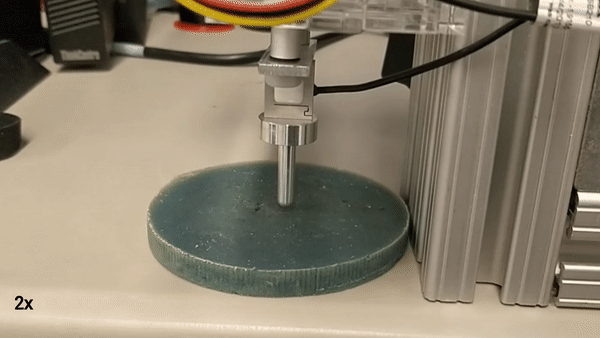

Accurate properties of living biological tissues are critically important to the advancement of medical simulation science. There are 2 key gaps in the currently available literature impeding the development of accurate simulators. First, there is minimal data collected for certain human tissues which are needed for surgical simulators. Second, the wealth of tissue characterization data collected on a broad range of tissues is largely unusable for the development of high-fidelity simulators because these tissues have been tested ex-vivo. It is well known that many tissues exhibit drastically different properties from ex-vivo to in-vivo. There are many reasons for these differences, including perfusion, temperature variations, and altered boundary conditions when tested ex-vivo.
Our research aims to address these two challenges. Partnering with local tissue donor services, we are building a database of human tissue properties, with specific attention to the tissues requisite for surgical simulators. In addition, we are building the robotic tools necessary to measure in-vivo tissue properties. Using these tools, we aim to quantify and model the decay of tissue properties from in-vivo to ex-vivo for various porcine tissues. With such a model the current wealth of ex-vivo data could be rendered more useful for developing accurate simulators.
Relevant Publications:
| [1] | Luis E Morales Tenorio, Kelsey J Devine, Jayme Lee, Timothy M Kowalewski, and Victor H Barocas. Biomechanics of Human Parietal Pleura in Uniaxial Extension. Journal of the Mechanical Behavior of Biomedical Materials, 75:330--335, 2017. [ .pdf ] |
| [2] | Trevor K Stephens, Kelsey A Harper, Mark J Brown, and Timothy M Kowalewski. Decay of tissue mechanical properties over a 24-hr period. ASME Journal of Medical Devices, 10(3):030950, 2016. [ .pdf ] |